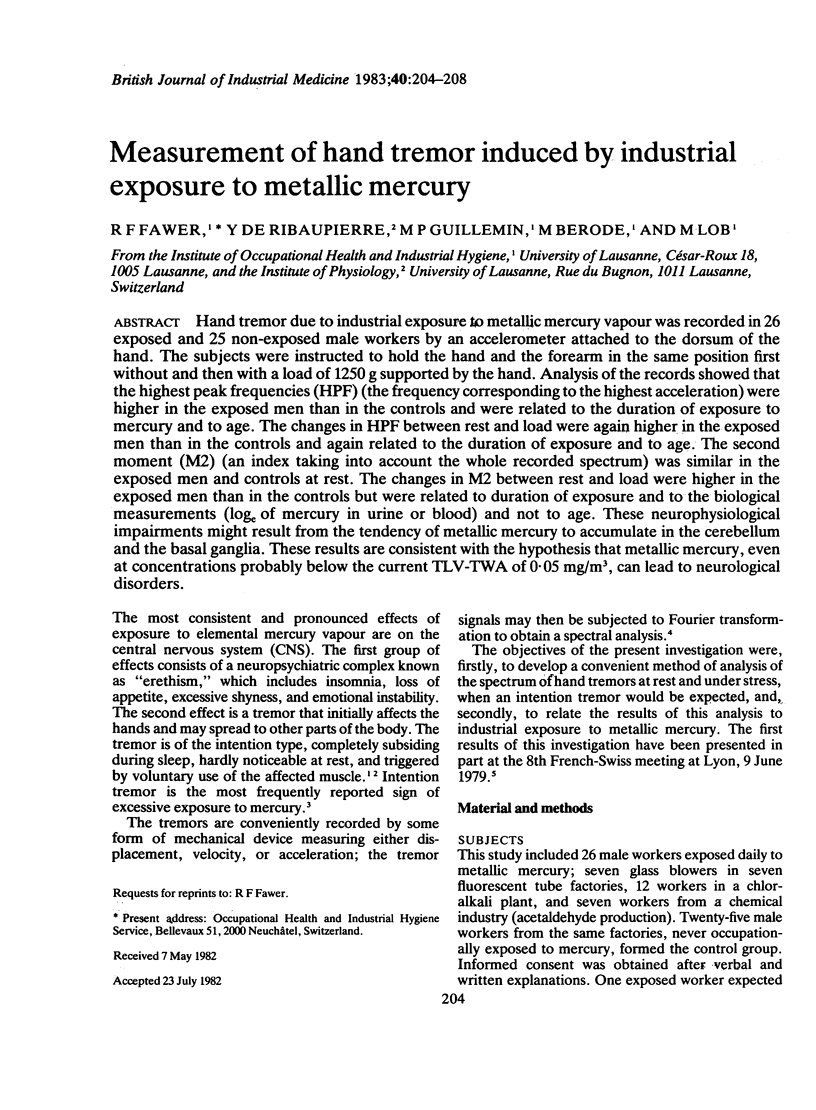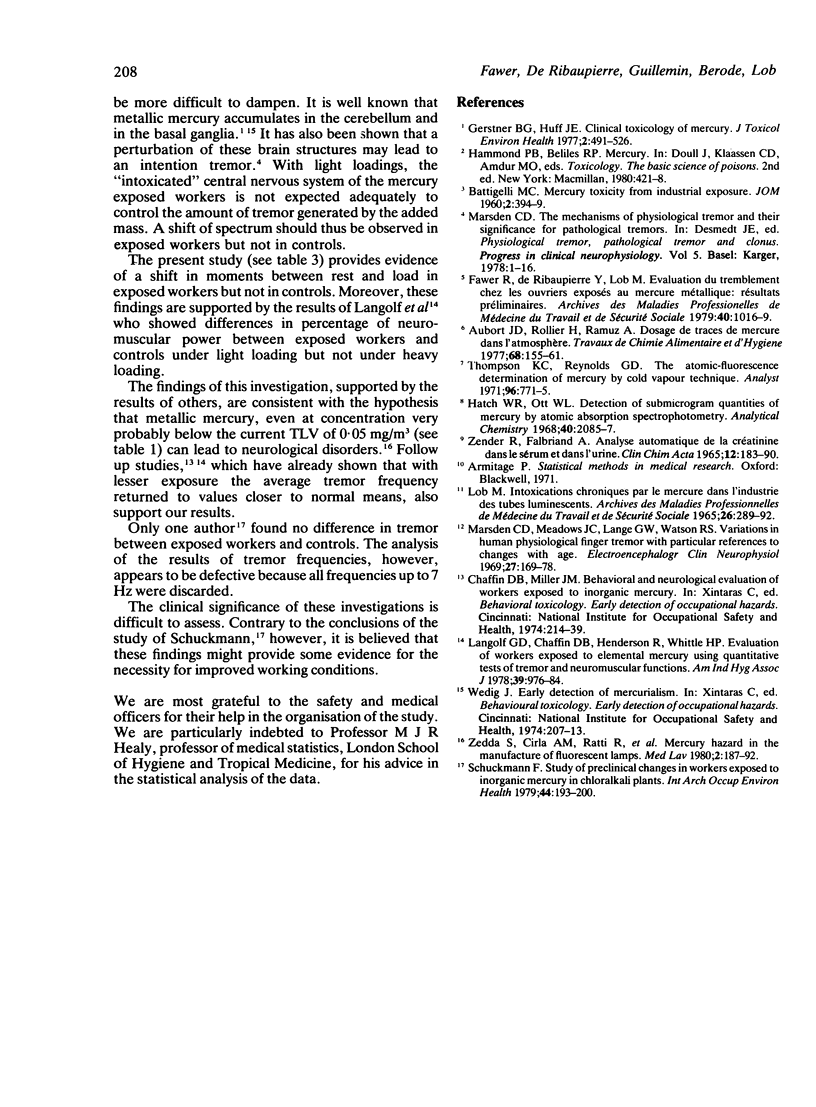Abstract
Hand tremor due to industrial exposure to metallic mercury vapour was recorded in 26 exposed and 25 non-exposed male workers by an accelerometer attached to the dorsum of the hand. The subjects were instructed to hold the hand and the forearm in the same position first without and then with a load of 1250 g supported by the hand. Analysis of the records showed that the highest peak frequencies (HPF) (the frequency corresponding to the highest acceleration) were higher in the exposed men than in the controls and were related to the duration of exposure to mercury and to age. The changes in HPF between rest and load were again higher in the exposed men than in the controls and again related to the duration of exposure and to age. The second moment (M2) (an index taking into account the whole recorded spectrum) was similar in the exposed men and controls at rest. The changes in M2 between rest and load were higher in the exposed men than in the controls but were related to duration of exposure and to the biological measurements (loge of mercury in urine or blood) and not to age. These neurophysiological impairments might result from the tendency of metallic mercury to accumulate in the cerebellum and the basal ganglia. These results are consistent with the hypothesis that metallic mercury, even at concentrations probably below the current TLV-TWA of 0.05 mg/m3, can lead to neurological disorders.
Full text
PDF




Selected References
These references are in PubMed. This may not be the complete list of references from this article.
- BATTIGELLI M. C. Mercury toxicity from industrial exposure. A critical review of the literature. Part II. J Occup Med. 1960 Aug;2:394–concld. [PubMed] [Google Scholar]
- Gerstner H. B., Huff J. E. Clinical toxicology of mercury. J Toxicol Environ Health. 1977 Jan;2(3):491–526. doi: 10.1080/15287397709529452. [DOI] [PubMed] [Google Scholar]
- Langolf G. D., Chaffin D. B., Henderson R., Whittle H. P. Evaluation of workers exposed to elemental mercury using quantitative tests of tremor and neuromuscular functions. Am Ind Hyg Assoc J. 1978 Dec;39(12):976–984. doi: 10.1080/0002889778507898. [DOI] [PubMed] [Google Scholar]
- Marsden C. D., Meadows J. C., Lange G. W., Watson R. S. Variations in human physiological finger tremor, with particular reference to changes with age. Electroencephalogr Clin Neurophysiol. 1969 Aug;27(2):169–178. doi: 10.1016/0013-4694(69)90170-9. [DOI] [PubMed] [Google Scholar]
- Schuckmann F. Study of preclinical changes in workers exposed to inorganic mercury in chloralkali plants. Int Arch Occup Environ Health. 1979;44(3):193–200. doi: 10.1007/BF00381134. [DOI] [PubMed] [Google Scholar]
- Thompson K. C., Reynolds G. D. The atomic-fluorescence determination of mercury by the cold vapour technique. Analyst. 1971 Nov;96(148):771–777. doi: 10.1039/an9719600771. [DOI] [PubMed] [Google Scholar]
- Zender R., Falbriard A. Analyse automatique de la créatinine dans le sérum et dans l'urine. Valeurs "normales" chez l'homme de la créatininémie et de la clearance. Clin Chim Acta. 1965 Aug;12(2):183–190. doi: 10.1016/0009-8981(65)90028-8. [DOI] [PubMed] [Google Scholar]


